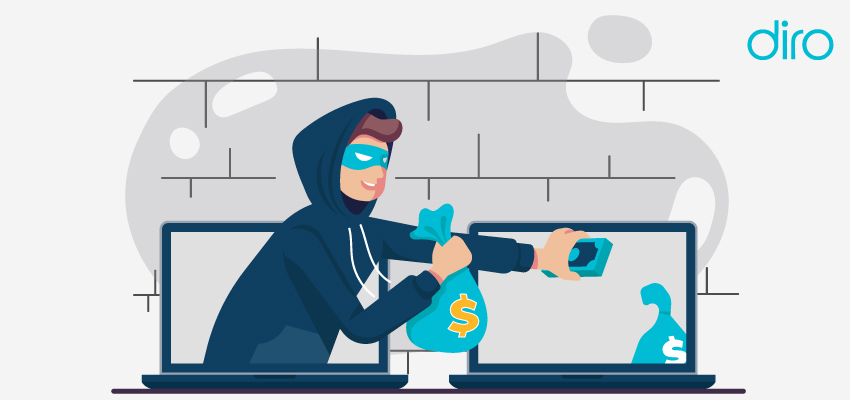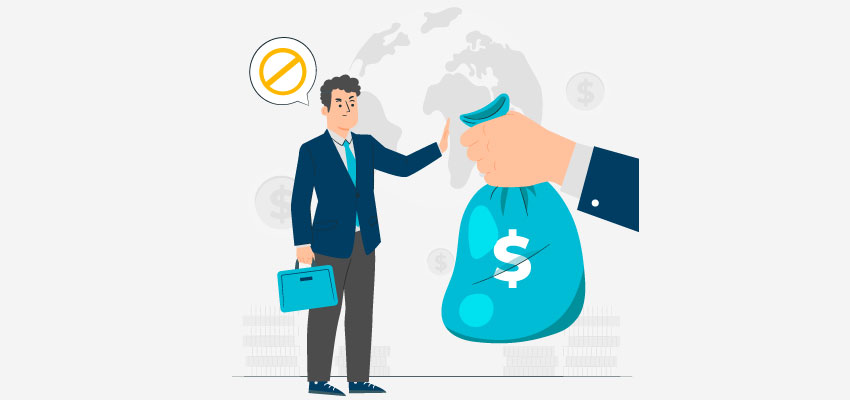Financial Fraud and How It Works?

Financial fraud, as the name suggests, is a major issue that causes businesses to lose billions every year. According to the Association of Certified Fraud Examiners, companies lose about 5% of their yearly earnings due to fraud.
For individuals, there’s a grave concern, as financial fraud cost individuals almost $8.8 billion in 2022. That’s a 30% increase from the previous year, as fraud is on the rise and affects businesses every year.
In this guide, we’ll break down what financial fraud is, what it is, and how to detect & prevent it.
Current Landscape of Financial Crime
The current financial crime landscape is huge and complicated. Businesses are always at risk of falling prey to financial fraud. With a proper understanding of the financial crime landscape, businesses can find ways to protect themselves better.
Major financial threats for businesses to keep in mind:
- ID theft & account takeover
- Cybercrime & data breaches
- Terrorist financing
- Money laundering schemes
Keeping up with regulatory guidelines also adds pressure on organizations to stay up to date. With every new regulation, institutions try to stay informed and compliant.
Well-organized groups often conduct financial fraud today, and detecting these activities requires having a deep understanding of the criminal landscape.
What is Financial Fraud & What Are Its Common Types?
Financial fraud involves scams by criminals to steal money from people or businesses. Here are the most common types of financial fraud that businesses & individuals should keep an eye on:
1. Identity Theft
Identity theft is the most common type of financial fraud. In this fraud, someone pretends to be you by getting hands on your personal information such as name, social security number, or credit card information.
When a fraudster steals your personal information, they use the information to open a bank account, get a credit card, get a line of credit, and more. Once the victim notices, it’s already too late.
2. Credit Card Fraud
Credit card fraud is also an extremely common type of financial crime. If you’ve ever had your card used without your knowledge, that’s fraud. Fraudsters can use a lot of methods to steal your credit card information. Once they have your information, they use the card to make a number of purchases.
3. Ponzi Schemes
The term “Ponzi Schemes” comes from the name “Charles Ponzi”, he invented the fraud type that’s known as Ponzi Schemes. Ponzi schemes usually promise investors good returns with little to no risk.
But in reality, the returns offered to initial investors come from the money of new investors instead of actual profits.
How Does Financial Fraud Affect Organizations?
Financial fraud impacts organizations with far more severity than individuals. The losses include financial, reputational, and legal damages.
Here are all the ways financial fraud impacts an organization:
1. Significant Financial Loss
The primary impact of financial fraud is the significant financial losses an organization has to face. Regardless of the type of financial fraud, organizations suffer massive financial losses. These losses can cause organizations to cease operations temporarily or in some cases, permanently.
2. Loss of Trust
Trust is the bread and butter of financial institutions. Whenever an instance of fraud is uncovered, customers have a hard time trusting the institution again. In the future, customers will be more hesitant to invest their hard-earned money in institutions that have been impacted by fraud.
3. Third-Party Actions
Financial fraud almost always triggers government investigations and regulatory scrutiny. Authorities want to see what caused the financial fraud and if the organization was following compliances set by the governing authority.
How to Detect Financial Fraud?
Identifying red flags is crucial for detecting and preventing fraud. Here are some of the most common red flags for businesses and individuals to keep in mind to prevent financial fraud:
1. Unusual Transaction Patterns
Businesses should keep a strong eye on any sudden changes in the volume of transactions. Any unusual surge or drop in transactions within a small time frame can be a sign of fraudulent activity.
This is crucial for businesses that deal with a high volume of transactions, such as e-commerce platforms.
2. Sudden Changes in Account Activities
Businesses have multiple accounts for different activities. Any sudden changes in account activities should be a cause for concern. Let’s say that Account X gets 100 transactions every day, suddenly the transactions drop to 50, or 500/day, it should be looked into.
The ideal solution is to monitor the activity level of accounts for a specific amount of time to identify suspicious activities.
Protecting Against Financial Fraud
1. Preventing Fraud with Strong Measures
Effective safeguards are crucial to stop financial fraud. Businesses can use secure authentication systems, educate employees, and adopt advanced tools to protect sensitive information.
2. Securing Access with Authentication
Strong systems for verifying identities form a key part of fraud prevention. Multi-layered security, such as combining passwords with fingerprint scans or tokens, adds extra barriers to unauthorized access. Multiple verification steps reduce the likelihood of breaches by making it harder for criminals to access private accounts or information.
3. Educating Staff to Spot Risks
Employees play an essential role in preventing fraud. Training programs teach them to recognize risks like fake emails or deceptive tactics. Knowledgeable staff can act as the first line of defense, identifying and reporting suspicious activities early. Well-informed teams improve the organization’s ability to handle security threats effectively.
4. Using Advanced Tools for Security
Modern tools enhance fraud prevention efforts by quickly identifying unusual activities. Machine learning helps detect unusual patterns in transactions. Encryption ensures sensitive data remains protected during transfer, shielding it from misuse even if accessed.
5. Checking Systems Regularly
Routine reviews of security measures help identify weak points. Conducting tests and staying updated on new risks ensures organizations can adapt to changing threats. By frequently updating their strategies, companies strengthen defenses against potential breaches.
6. Managing Vendor Risks
Collaborating with external partners introduces additional risks. Reviewing third-party security measures and setting clear expectations reduces vulnerabilities. Agreements with outside entities should include strict rules for protecting data and maintaining safe practices.
7. Encrypting and Storing Data Safely
Strong data protection practices make it harder for attackers to exploit stolen information. Encryption keeps data unreadable without the proper keys. Limiting access to essential personnel further reduces the risk of unauthorized access.
Identifying Fraudulent Behavior
1. Advanced Technology in Fraud Detection
Cutting-edge tools help detect fraud by analyzing massive amounts of information quickly. Systems powered by artificial intelligence adapt to new schemes, spotting irregularities faster and more accurately than traditional methods.
2. Finding Unusual Patterns
Systems that monitor for unexpected behavior can flag suspicious transactions. Sudden changes, like a sharp increase in spending or purchases made in unusual locations, can indicate potential issues.
3. Monitoring in Real Time
Ongoing monitoring helps businesses catch fraudulent actions as they occur. Quick detection prevents further damage by allowing immediate action, such as freezing accounts or blocking transactions.
Reducing Errors with Improved Algorithms
False alarms can disrupt business and frustrate customers. Enhanced systems learn over time to differentiate between normal activities and genuine threats, reducing unnecessary alerts.
Best Practices for Organizations
Staying ahead of fraud requires consistent efforts. Regular risk assessments, advanced technologies, and collaboration among departments create a strong defense. Employees must remain vigilant, and systems need continuous updates to keep up with new challenges.
Building a Culture of Security
Organizations can promote security by encouraging ethical behavior and transparent communication. Rewarding employees who identify risks fosters a proactive environment. A shared focus on fraud prevention strengthens overall protection.













